What is Generative AI?
Generative artificial intelligence can produce a wide range of content, including text, graphics, audio, and synthetic data. Recent interest in generative AI has been sparked by how simple it is to quickly produce high-quality text, photos, and movies using innovative user interfaces.
The fact that the technology is not wholly new should be noted. In the 1960s, generative AI was initially applied to chatbots. However, until the development of generative adversarial networks, or GANs, in 2014, generative AI was unable to produce convincingly realistic images, movies, or sounds of real humans. A type of machine learning algorithm is GANs.
On the one hand, this recently discovered talent has opened the door to the possibility of more robust educational materials and improved movie dubbing. Additionally, harmful cybersecurity assaults on businesses, such as phoney requests that convincingly impersonate an employee's boss, as well as deepfakes—digitally manufactured images or movies—were exposed.
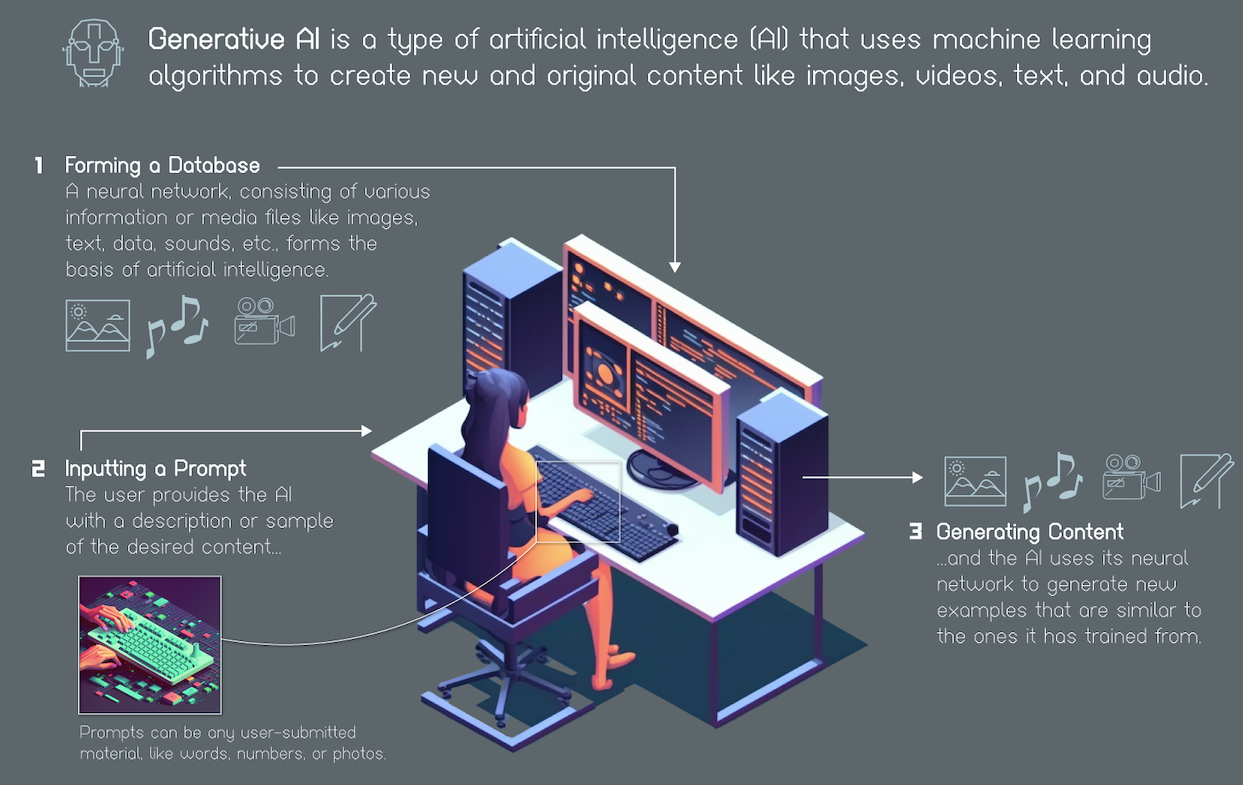
How Generative AI works?
Generative AI can receive cues in the form of text, images, videos, designs, musical notation, and other inputs that it can comprehend. Then, as a response to the proposal, various AI systems return brand-new information. Content options include essays, problem-solving strategies, and lifelike impersonations created using a person's photos or speech.
Generative AI in its early stages sometimes required data submission via an API or another time-consuming process. Using specific tools and programming languages like Python, developers must build applications.
Presently, pioneers in the field of generative AI are developing improved user interfaces that let you make a request in straightforward English. After giving a preliminary response, you can further customise the results by adding comments on the tone, writing style, and other elements you wish the text produced automatically to reflect.
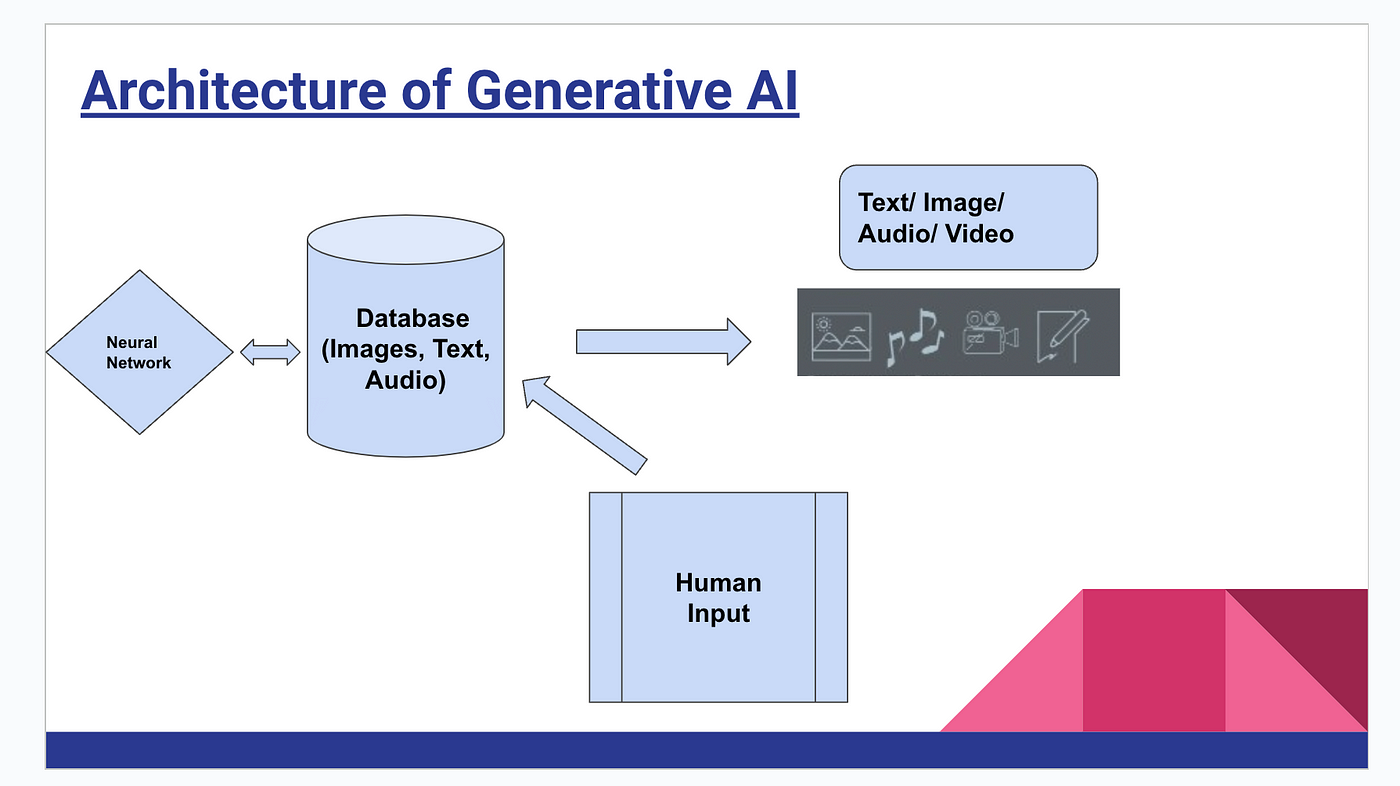
Generative AI Use Cases
Generative AI technologies have occasionally been likened to all-purpose technologies like computing, electricity, and steam power since they have the ability to profoundly impact a wide number of industries and use cases.
• Food Industry
Thanks to generative AI, which is creating new opportunities, the food and beverage business is evolving. While keeping a strong emphasis on health and nutrition, AI is expanding the boundaries of what is possible and bringing us on a delicious culinary adventure. This is achieved through facilitating the formulation of original recipes, customised nutrition, the development of new products, and stringent quality control. The food business is changing as a result of generative AI in the following ways:
1. Recipe Generation:
Recipe development is an ancient art. Generative AI brings up a world of intriguing and delectable possibilities by incorporating a scientific component. AI models are trained on hundreds of existing recipes to identify culinary patterns, component combinations, preparation methods, and more. These trained models can be used to develop new recipes with creative flavour and ingredient pairings.
An intriguing example is IBM's AI named Chef Watson. Chef Watson creates unique recipes by analysing the chemical composition of food and combining ingredients with similar qualities. This makes it possible for invention that was previously unheard of, leading to meals that are both surprising and delicious.
2. Taste and Aroma Modelling:
Generative AI can be trained using the chemicals that give food and beverages their flavour and scent. By combining these molecules in novel ways, it can help in the production of new flavours and smells. As a result, the time and materials required for the experimental manufacture of these components can be considerably reduced.
Using AI to optimise the fermentation process and produce fermented products with desired qualities is known as precision fermentation.
Generative AI creates sustainable food solutions. AI is used by the food technology company Notco to develop plant-based alternatives to animal products.
Using AI in gastronomic experiences helps companies like Tastewise stay competitive by analysing current consumer food trends.Enhancing Supply
3. Chain Management:
The usage of generative artificial intelligence (AI) includes streamlining procedures by enhancing supply chain management in addition to developing and producing meals. Businesses can drastically reduce costs while boosting efficiency by using demand forecasts, managing inventory levels, and tracking shipments.
Consider businesses like Walmart and Nestlé. Walmart uses generative artificial intelligence to forecast product demand, which helps them better manage inventories and track shipments. Nestlé employs artificial intelligence to optimise its distribution network and does data analysis to identify potential growth regions. Our AI-powered services will cause similar changes in your supply chain management.
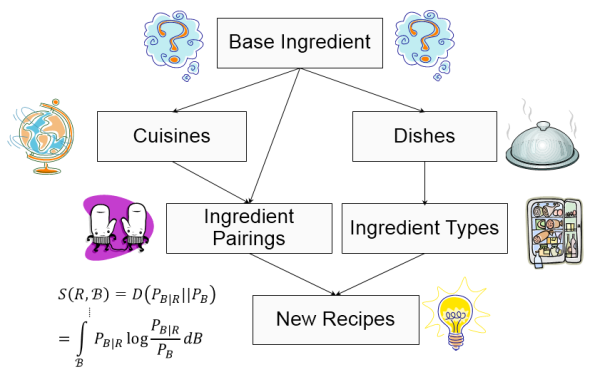
• Education Sector
Educational institutions are aggressively integrating generative AI into EdTech solutions. By applying generative AI algorithms, these companies provide cutting-edge solutions that produce customised learning materials, interactive exercises, simulations, and virtual labs. Through virtual mentors and tutors, these tools encourage creativity, facilitate experiential learning, and provide immediate feedback. The seamless integration of Generative AI into educational systems revolutionises the learning experience for both students and teachers.
1. Personalize Learning Experience:
One benefit of generative AI is the ability to tailor learning experiences and content for individual pupils. By assessing student data, such as learning habits, interests, and performance, AI algorithms can adapt curriculum, resources, and activities to each student's specific needs and preferences. Personalization increases student engagement, motivation, and information retention by providing them with content that is relevant to their learning.
2. Create Virtual Instructors:
Generative AI techniques aid in the design of teachers or chatty speaking agents for usage with students. These AI-powered instructors can practise speaking, answering questions, providing explanations, and providing personalised help. Using machine learning and natural language processing techniques, virtual teachers can modify their responses based on user input, monitor progress, and provide individualised recommendations. They can assist students in a range of subject areas, promote independent learning, and serve as crucial tools, particularly for online or self-paced learning.
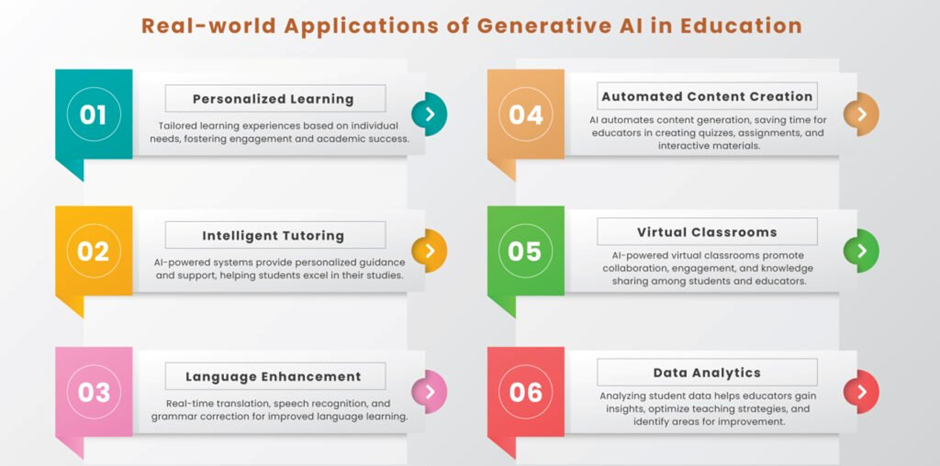
Generative AI Tools
• Tools for text generation include Lex, GPT, Jasper, and AI-Writer.
• Midjourney, Stable Diffusion, and Dall-E 2 are image generating tools.
• Amper, Dadabots, and MuseNet are examples of tools for creating music.
• CodeStarter, Codex, GitHub Copilot, and Tabnine are examples of tools for creating code.
• The voice synthesis tools Descript, Listnr, and Podcast.ai are examples.
• Companies that produce AI chip design tools include Synopsys, Cadence, Google, and Nvidia.
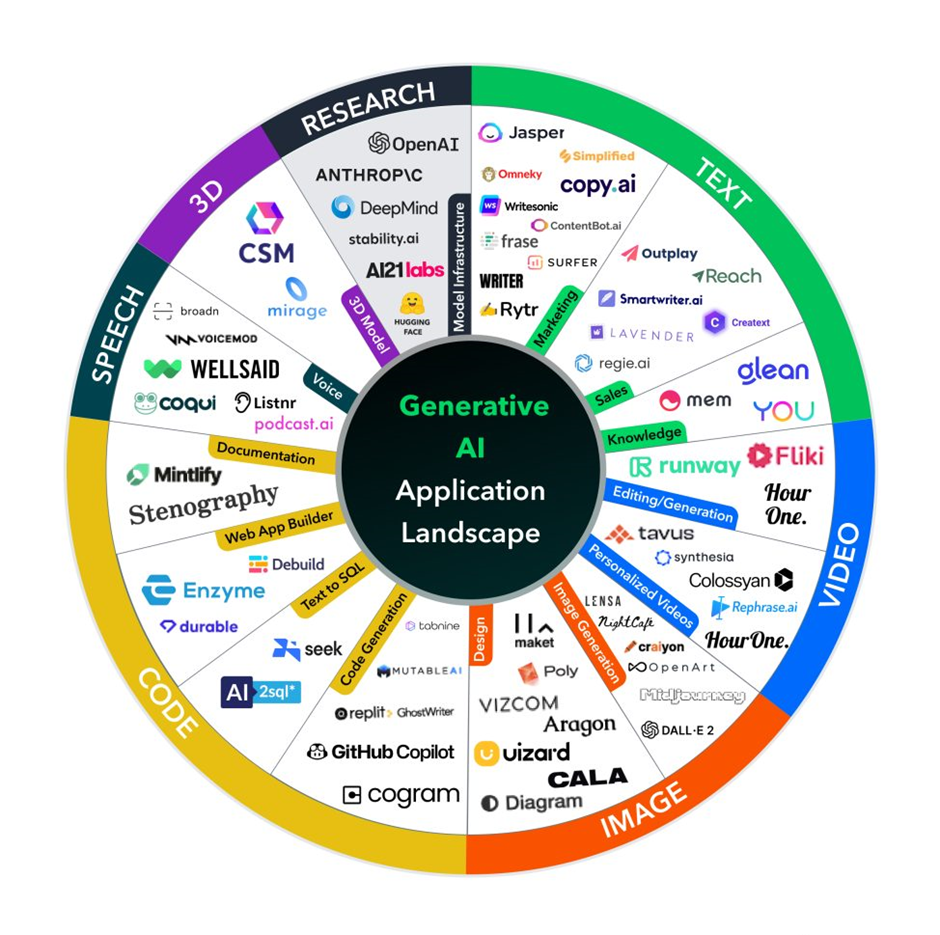
Benefits of Generative AI
• Generative AI algorithms can create new, original content like images, movies, and text that is indistinguishable from stuff created by people. This has applications in the marketing, creative, and entertainment industries.
• Generative AI techniques can improve the efficacy and precision of existing AI systems, such as those for computer vision and natural language processing. For instance, generative AI algorithms can generate fake data, which can subsequently be used to train and evaluate more AI systems.
• Businesses and academics can use generative AI algorithms to investigate and analyse complex data in fresh ways, discovering patterns and trends that might not be apparent from the raw data alone.
• By automating and accelerating a variety of tasks and processes, businesses and organisations can save money and time.
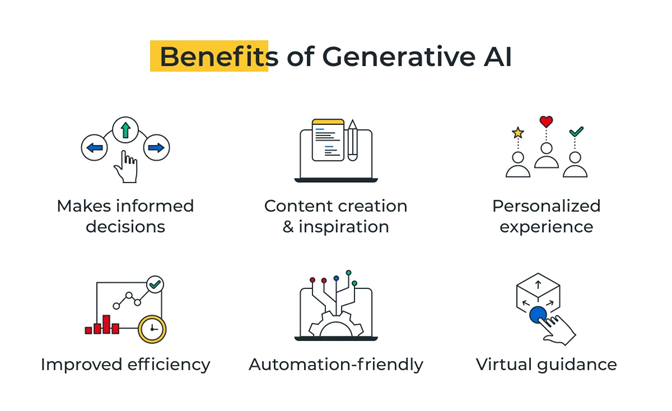
Conclusion
Future research and development of stronger generative AI capabilities for text, photos, video, 3D content, pharmaceuticals, supply chains, logistics, and business processes will be sped up with the support of advancements in AI development platforms. Even though these new stand-alone tools are excellent, generative AI will have the biggest impact when these features are integrated into existing solutions.
The quality of grammar checkers will increase. More beneficial recommendations will be readily included into workflows via design tools. To make training others more effective, training tools will be able to automatically discover best practises in one area of the organization. And these are but a few of the ways that generative AI will alter the way we conduct business.
